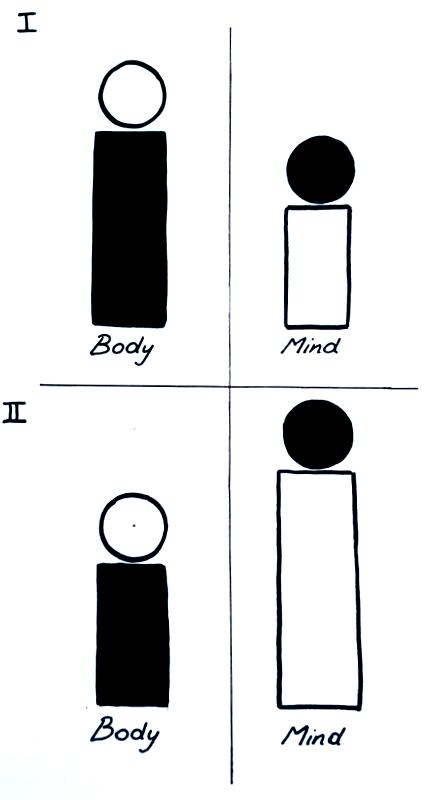From cyranic dreams to reality:
A brief history

to better grasp this article, read here what a cyranoid is – in case you haven’t already done so
Just to recap
In the late 20th century, social psychologist Stanley Milgram came up with an original social experiment, which he named “cyranoid experiment”. He had already become known by then for using deception and other controversial methods in his “obedience to authority” experiment.
Milgram’s cyranic dream
Milgram’s research on the cyranoid method span from 1977 to his death in 1984. It may come as a surprise to you that his work never saw the light of day and remained unpublished.
In 1979, Milgram had attempted to make a research proposal to the National Science Foundation. In it, he outlined 4 research projects that he had in mind:
In Study 3 of his proposal – “studies in person perception” – Milgram proposed to study:
1) how naïve participants form impressions on the basis of the physical appearance of the person they see (‘the bodies‘ or in Milgram’s terms “shadowers”)
2) how the same naïve participants perceive the personalities of different ‘bodies’ that all share the same ‘mind’ (or named “source” by Milgram).
He also expressed the idea to mix and match a male body with a female mind and vice-versa and thus to examine how gender appearance might affect impression.
Although his grant application was rejected the same year, Milgram never abandoned his dream.
In 1981 he conducted more formal pilot studies with his graduate students. In these he tested ‘the cyranic illusion’ and played himself the role of ‘mind’ that produces speech. School children played the role of ‘bodies’ that repeated his words and high school teachers played the role of ‘naïve participants’. The pilot studies consisted of 20-minute or longer unscripted (improvised) conversations. Thereafter Milgram analysed the post- experiment questionnaires that were filled out by the participants.
💡 Stanley Milgram deserves credit for being the first researcher to combine speech shadowing with spontaneous, improvised dialogues.
However, due to technical limitations at the time, Milgram’s cyranoid set-up consisted of visible (conspicuous) equipment ( – hidden earpieces had yet to be invented !).
Post – Milgram: new cyranic try-outs
After Milgram’s death the cyranoid method stayed ‘on snooze mode‘ in social psychological research for almost 25 years. It was only slowly rediscovered in the early 2000’s for the design of human interactions.
Robb Mitchell, Associate Professor of Design at the University of Southern Denmark, was one of the first researchers to try to use cyranoids in a completely different area.
💡 Just to reiterate: a cyranoid is a ‘hybrid’ of two separate individuals, ’the body’ and ’the mind’. The mind speaks words or sentences that the body instantaneously repeats.
Mitchell investigated how people would interact with each other via cyranoids at an art exhibition launch event. His point was not to deceive people by hiding ‘the mind’ from them – quite the opposite: Visitors of the event were completely made aware of the fact that ‘the body’ of the person they saw was artificially recombined with ‘the mind’ of another person. They had then the opportunity to step themselves into different roles and play the ‘mind’ or ‘body‘.
Mitchell’s study showed some of the advantages of such visible, consensual cyranoids for social interactions:
“ Visitors that were made aware of the fact that they ‘were talking through a cyranoid‘ became much more relaxed and the conversation [became] more reflective and playful”
Mitchell (2009, p.57)
Employing cyranoids in this specific case offered the potential:
– to foster the social inclusion of the person playing ‘the body‘ in a group of people, and
– to create a greater sense of belonging between ‘body’ and visitors.
Mitchell’s bottom line here seems to be that consensual cyranoids could possibly be employed to render social situations more dynamic.
Milgram’s revival: a dream comes true
In 2015, Kevin Corti, PhD student at the London School of Economics and Political Science (LSE), published his comprehensive PhD dissertation on the cyranoid method and its various applications.
As part of it, Corti and his PhD supervisor, LSE Associate Professor Dr Alex Gillespie, engaged in a project whose aim was to revisit Milgram’s cyranoid experiment – just like he had originally conceived it.
In line with Stanley Milgram, Corti and Gillespie used covered cyranoids with a hidden mind that were in a face-to-face interaction with naïve participants. However, with the advantage of 21st century technical progress, they could now make use of hidden inner-ear radio receivers to relay the mind’s speech to the body’s ear.
In 2 studies they proved the robustness of ‘the cyranic illusion’. Remember, the illusion lies in the fact that naive participants do not sense that another hidden person is prompting the person they see and talk to.
Corti and Gillespie showed that this phenomenon persists even in situations of high incongruity between body and mind, i.e. where an adult body repeats the words of a child (which is in the role of ‘mind’) and vice-versa.
The Adult & Child experiment
The Adult & Child experiment consisted of 4 experimental conditions:
2 conditions where participants interacted with a cyranoid: I) Adult Body + Child Mind and II) Child Body + Adult Mind

2 conditions where participants interacted with autonomous individuals (without cyranoids): III) Adult Body & Mind and IV) Child Body & Mind

Mind- boggling findings
Here are some of the main findings from Corti’s and Gillespie’s studies:
► When you recombine the body of a person with the mind of a different person (in a cyranoid set-up), the overall ‘hybrid persona’ produces less speech than an autonomously speaking person (without cyranoid set-up).
As such, adults who spoke autonomous, self-authored words generated far greater amounts of speech than children that spoke after adults and than adults that spoke after children. (*The difference was statistically significant).
► The amount of speech produced by a cyranoid (or ‘hybrid persona’) varies depending on how you pair body and mind.
► Participants partially adjust their question difficulty to the physical age of the body they see.
When participants faced a child body, they automatically asked easier questions, even though the child was merely repeating words produced by an adult (i.e. by someone with “higher actual mental capacity”). This reflects age-group stereotyping by participants based on physical appearance, as easier questions were asked independently of the actual mental capacity of the hidden adult in the back.
► Participants rate the overall person they interact with differently depending on the body-mind pairing
Corti and Gillespie found that when an adult (body) was repeating words after a child (mind), participants rated the (overall) person they interacted with much more negatively than when they faced a child that spoke self-authored words ( – although in both cases the same child was thinking and producing speech).
To conclude
This implies that, when faced with a ‘hybrid social persona’ or ‘mash-up’ of two separate individuals in a cyranoid set-up, impressions dramatically differ depending on who is in the role of mind and who is in the role of body.
And: it also reveals the huge potential of using this method for research on impression formation and stereotyping.
Coming up next
I unveil how I conducted my own cyranoid experiment.
Stay tuned! 🐝
Written and published August 2019
by Jessica
List of references I used in this article:
Corti K. & Gillespie A. (2015) Revisiting Milgram’s Cyranoid Method: Experimenting With Hybrid Human Agents, The Journal of Social Psychology, 155:1, 30-56, DOI: 10.1080/00224545.2014.959885
Corti, K. (2015). Developing the Cyranoid Method of Mediated Interpersonal Communication in a Social Psychological Context: Applications in Person Perception, Human-computer Interaction, and First-person Research, PQDT – UK & Ireland.
Milgram, S. (1979). The technique of mediated speech as a tool in social psychology [National Science Foundation grant proposal]. Stanley Milgram Papers Archive.Manuscripts and Archives Department, Sterling Memorial Library, Yale University,New Haven, CT.
Milgram, S. (2010). Cyranoids. In T. Blass (Ed.), The individual in a social world: Essays and experiments (pp. 402–409). New York: McGraw-Hill.
Mitchell, R. (2009). An in your face interface: Revisiting cyranoids as revealing medium for interpersonal interaction. Paper presented at the 5th Student Interaction Design Research Conference, Eindhoven, Netherlands.
Mitchell, R., Gillespie, A., & O’Neill, B. (2011). Cyranic contraptions: Using personality surrogates to explore ontologically and socially dynamic contexts. Paper presented at DESIRE’11, Eindhoven, Netherlands.